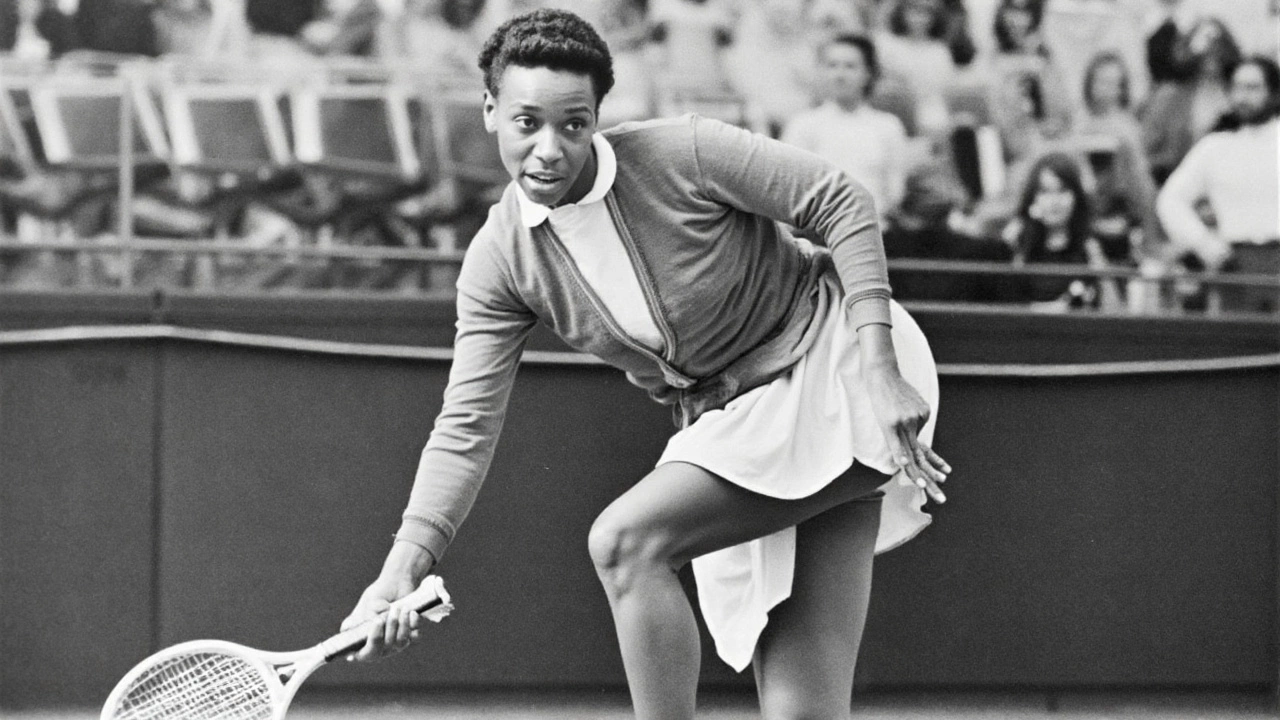Why the US Open is going all-in on Althea Gibson
Seventy-five years after she walked onto a court where few wanted her, Althea Gibson is finally getting a full-tournament salute worthy of her influence. The 2025 US Open has dedicated the entire event to her legacy, marking the 75th anniversary of her historic 1950 appearance at the U.S. National Championships, the tournament that became the Open. It’s not a token gesture or a mid-match video. It’s wall-to-wall recognition for the woman who changed what was possible in tennis.
From the opening night video narrated by Venus Williams to special on-court moments with Gibson’s family, the message has been consistent: before Serena and Venus, before Naomi Osaka and Coco Gauff, there was Gibson. She wasn’t just first through the door. She played with the kind of dominant, no-doubt excellence that forced a segregated sport to reckon with her presence.
Gibson’s competitive record holds up against any era. She won 11 Grand Slam titles across singles and doubles, including back-to-back U.S. Nationals crowns and back-to-back Wimbledon singles titles in 1957 and 1958. A year earlier, in 1956, she became the first Black player to win a Grand Slam singles title at Roland Garros. In 1957, she was named the Associated Press Female Athlete of the Year. All of this came less than a decade after she had to fight for the right to even enter the draw.
Her story didn’t end at Centre Court or Forest Hills. She turned professional before the Open Era, when prize money was meager and opportunities were limited. She toured with exhibition troupes, then became one of the first Black women to compete on the LPGA Tour. She worked in public service and kept pushing for broader access to sport. For years, though, her name wasn’t front and center in highlight reels. She was often framed as a historical footnote, not the foundation.
That’s what makes this year’s Open different. The USTA isn’t just citing Gibson; it’s programming around her. The layered tributes tell the story of a player who broke the color barrier in 1950 at Forest Hills, seven years before she took charge of the sport. And they connect her to the present-day US Open, staged at the Billie Jean King National Tennis Center, with Arthur Ashe Stadium at its core—a venue named for another trailblazer whose own path runs straight through Gibson.
The art sets the tone. This year’s official tournament poster, by Melissa Koby, marks the first time the Open has tapped a Black theme artist. Koby’s silhouette design blends hard-court blues and greens, the Statue of Liberty, the trophies, and a tennis ball into a vibrant portrait that’s both modern and reverent. Koby said she created the piece imagining Gibson as an ancestor who would be proud to see a “little Black girl” honoring her with art. The poster isn’t background decoration; it’s a statement about who gets to be iconic.
The Open has threaded Gibson’s presence into match days, too. Before his first-round win over Peru’s Ignacio Buse, Ben Shelton met members of Gibson’s family on court at Arthur Ashe Stadium. He called it a cool honor—simple words, but the moment landed. These are the new faces of American tennis meeting the family of the person who made their rise possible.
There’s also a reach beyond the tennis diehards. The tournament printed 40,000 copies of a Marvel comic featuring Gibson alongside the Fantastic Four, a pop-culture pairing built for younger fans who may not know the name but will remember the story. On her birthday, August 25, the Open handed out commemorative pins with her image. The following evening session opened with a performance by the Florida A&M University marching band—Gibson’s HBCU—bringing her history into a noisy, joyful present.
The guest list underscores how wide her impact runs. The Opening Night Gala in the President’s Suite drew Spike Lee, Gayle King, Katie Couric, Vera Wang, and Tina Knowles. Andre Agassi received the Serving Up Dreams Award, a nod to how champions can use their platforms to grow the sport—another thread back to Gibson’s example.
Why does this recognition matter now? Because Gibson’s climb was never just about tennis. She came up in an era when public courts and private clubs were segregated, and when gatekeepers could keep you out with a wink and a nod. A 1950 push from tennis champion Alice Marble helped force the issue, but once Gibson crossed the line, she had to win and keep winning to stay there. She did. By 1957, the conversation had flipped from “should she be allowed in?” to “who can stop her?”
Her dominance, though, didn’t come with the visibility or earnings of later generations. She peaked a decade before the Open Era made prize money real and television coverage constant. That timing explains a lot about why her name isn’t stitched into casual fan memory the way it should be. It also explains why the Open is using every tool—video, art, music, giveaways, on-court ceremonies—to rebuild her place in the sport’s living memory.
There’s also a throughline from Gibson to how the US Open thinks about representation today. The tournament, with Arthur Ashe Stadium as its hub, has long positioned itself as the major that looks like New York: diverse, loud, and forward-looking. Honoring Gibson at scale fits that identity. It’s not just the right story. It’s the house style.

How the tournament is honoring her legacy
Organizers built the tribute so fans encounter Gibson at every turn—entering the grounds, watching the night session, and scrolling through the Open’s feeds. The idea is simple: make her legacy part of the tournament’s daily rhythm, not a one-off moment between matches.
- Opening-night video narrated by Venus Williams, tracking Gibson’s rise from barrier-breaker to champion.
- Official poster by Melissa Koby, the first Black theme artist in Open history, featuring a layered silhouette with court colors, the Statue of Liberty, trophies, and a tennis ball.
- Marvel comic crossover: 40,000 copies spotlighting Gibson alongside the Fantastic Four, aimed at kids and first-time visitors.
- On-court moments with Gibson’s family, including ceremonial coin tosses during early sessions.
- Commemorative pins distributed on August 25—what would have been her 98th birthday—putting her image on thousands of jackets and bags.
- Florida A&M University’s marching band opening a night session, tying the celebration to her HBCU roots.
- Opening Night Gala with a cross-industry guest list and the Serving Up Dreams Award presented to Andre Agassi.
Pieces like these do more than honor the past. They build bridges. A kid who grabs a comic may go home and Google Gibson. A fan who comes for a night match gets a crash course in a history that shaped today’s draw. An artist’s poster becomes a keepsake with a story attached. That’s how a legacy travels.
For current players, the context is powerful. American tennis has a new wave—Coco Gauff leading the line, a pack of energetic men’s players filling night sessions, and a steady flow of young pros from college ranks. Their pipeline looks very different because Gibson proved a Black woman could not only compete at the top but own the sport. You can draw a straight line from Gibson to Ashe, to Zina Garrison and Lori McNeil, to the Williams sisters who redefined dominance, to Osaka and Gauff, who’ve kept the conversation global and current.
The Open’s campus makes that lineage hard to miss. There’s already a statue of Gibson on site, unveiled in recent years at the Billie Jean King National Tennis Center. Fans pass it on the way to Arthur Ashe Stadium, where this year’s nightly ceremonies and built-in tributes keep her front of mind. The geography is the lesson: trailblazers don’t exist in separate chapters here; their stories overlap.
Gibson’s competitive résumé still surprises people. The 11 majors include singles and doubles titles that came in a compressed burst—French Open first, then Wimbledon and the U.S. Nationals twice. She was tall, athletic, and aggressive, with a serve-and-volley game that traveled on grass and clay. In an era of wooden racquets and strict etiquette, she played to win and wore the pressure that came with representing more than herself. Ask anyone who understands the sport’s history: titles matter, but doing it while carrying that weight changes the scale.
There’s been a quiet course-correction underway in how tennis tells its own story. Museums, documentaries, and federations are filling in gaps that used to be brushed over. The US Open’s 2025 tribute is part of that. It acknowledges the awkward truth that the sport benefited from Gibson’s courage but didn’t always keep her in the spotlight. The line circulating around the grounds—“Gibson is the foundation. Without her, the house of modern tennis doesn’t stand.”—speaks to that recalibration.
If you’re visiting the tournament this year, expect Gibson’s presence to be a steady companion. The scoreboard vignettes return between matches. The poster shows up on merch and concourse walls. The pins and programs keep her face in circulation. And on the courts, there’s a sense that players understand who made their careers possible. When Ben Shelton called his pre-match meeting with Gibson’s family an honor, it didn’t feel like boilerplate. It felt like acknowledgment.
There’s also the New York factor. The Open is the sport’s biggest stage, and it belongs to the city that embraces scale. Honoring a pioneer with a production this size makes sense here in a way it might not anywhere else. The crowds are loud and mixed, the late-night matches feel like events, and the off-court programming has room to breathe. It’s the right canvas for a legacy this big.
Some fans will come for the tennis and discover the history. Others will arrive because of the story and leave talking about the tennis. That’s the sweet spot. Because at its core, this tribute isn’t separate from the tournament. It’s a reminder that every forehand and every trophy ceremony now is built on what Gibson made possible back then. For a sport that once struggled with who gets to stand where, that’s progress you can see and hear every night.




